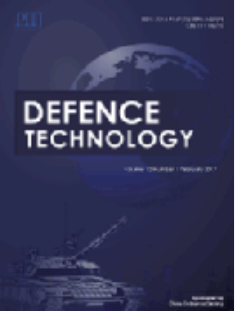Research on multi-view collaborative detection system for UAV swarms based on Pix2Pix framework and BAM attention mechanism
IF 5.9
Q1 ENGINEERING, MULTIDISCIPLINARY
引用次数: 0
Abstract
Drone swarm systems, equipped with photoelectric imaging and intelligent target perception, are essential for reconnaissance and strike missions in complex and high-risk environments. They excel in information sharing, anti-jamming capabilities, and combat performance, making them critical for future warfare. However, varied perspectives in collaborative combat scenarios pose challenges to object detection, hindering traditional detection algorithms and reducing accuracy. Limited angle-prior data and sparse samples further complicate detection. This paper presents the Multi-View Collaborative Detection System, which tackles the challenges of multi-view object detection in collaborative combat scenarios. The system is designed to enhance multi-view image generation and detection algorithms, thereby improving the accuracy and efficiency of object detection across varying perspectives. First, an observation model for three-dimensional targets through line-of-sight angle transformation is constructed, and a multi-view image generation algorithm based on the Pix2Pix network is designed. For object detection, YOLOX is utilized, and a deep feature extraction network, BA-RepCSPDarknet, is developed to address challenges related to small target scale and feature extraction challenges. Additionally, a feature fusion network NS-PAFPN is developed to mitigate the issue of deep feature map information loss in UAV images. A visual attention module (BAM) is employed to manage appearance differences under varying angles, while a feature mapping module (DFM) prevents fine-grained feature loss. These advancements lead to the development of BA-YOLOX, a multi-view object detection network model suitable for drone platforms, enhancing accuracy and effectively targeting small objects.
基于Pix2Pix框架和BAM关注机制的无人机群多视点协同检测系统研究
无人机群系统具有光电成像和智能目标感知能力,是在复杂、高风险环境下执行侦察和打击任务必不可少的系统。它们在信息共享、抗干扰能力和作战性能方面表现出色,这对未来的战争至关重要。然而,在协同作战场景中,不同的视角对目标检测提出了挑战,阻碍了传统的检测算法并降低了准确性。有限的角度先验数据和稀疏的样本进一步复杂化了检测。提出了多视点协同检测系统,解决了协同作战场景下多视点目标检测的难题。该系统旨在增强多视图图像生成和检测算法,从而提高跨不同视角的目标检测的准确性和效率。首先,构建了三维目标视距角度变换观测模型,设计了基于Pix2Pix网络的多视点图像生成算法;在目标检测方面,利用了YOLOX,并开发了一个深度特征提取网络BA-RepCSPDarknet,以解决与小目标规模和特征提取相关的挑战。此外,针对无人机图像中深度特征图信息丢失的问题,提出了一种特征融合网络NS-PAFPN。视觉注意模块(BAM)用于管理不同角度下的外观差异,特征映射模块(DFM)用于防止细粒度特征丢失。这些进步导致BA-YOLOX的发展,这是一种适用于无人机平台的多视图目标检测网络模型,可提高精度并有效瞄准小目标。
本文章由计算机程序翻译,如有差异,请以英文原文为准。
求助全文
约1分钟内获得全文
求助全文
来源期刊

Defence Technology(防务技术)
Mechanical Engineering, Control and Systems Engineering, Industrial and Manufacturing Engineering
CiteScore
8.70
自引率
0.00%
发文量
728
审稿时长
25 days
期刊介绍:
Defence Technology, a peer reviewed journal, is published monthly and aims to become the best international academic exchange platform for the research related to defence technology. It publishes original research papers having direct bearing on defence, with a balanced coverage on analytical, experimental, numerical simulation and applied investigations. It covers various disciplines of science, technology and engineering.
 求助内容:
求助内容: 应助结果提醒方式:
应助结果提醒方式:


